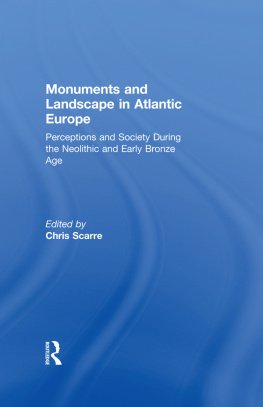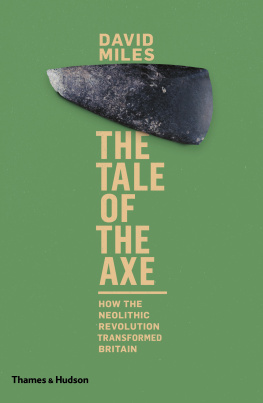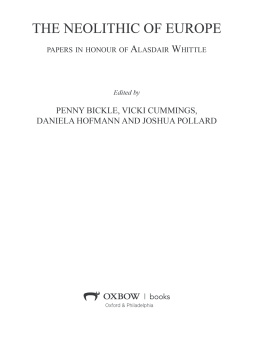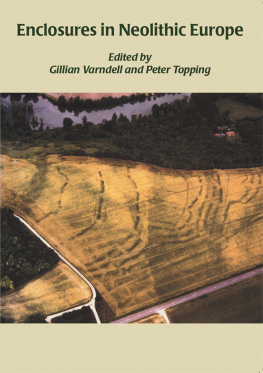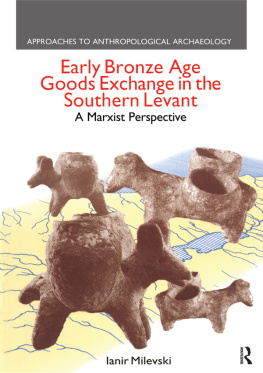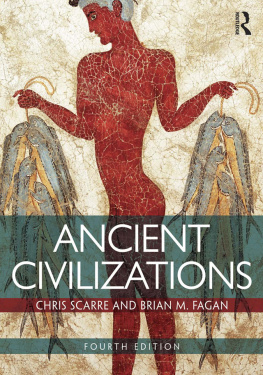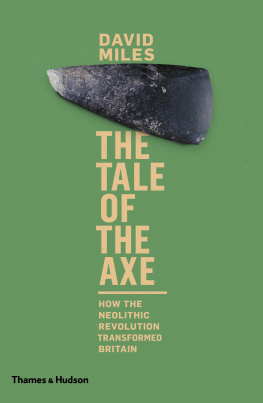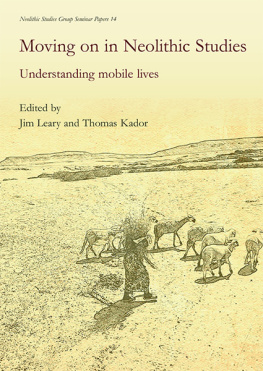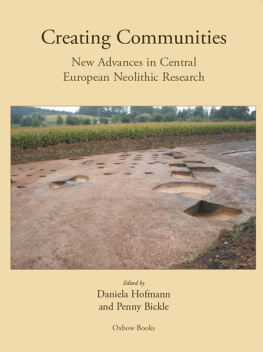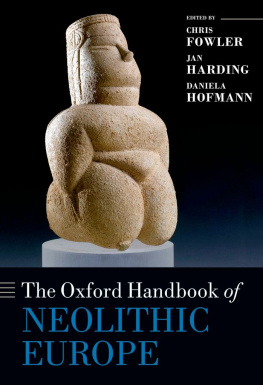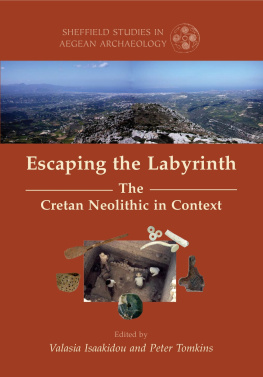Monuments and Landscape in Atlantic Europe
Atlantic Europe is the zone par excellence of megalithic monuments which encompasses a wide range of earthen and stone constructions from impressive circles to modest chambered tombs. A single basic concept lies behind this volume: that the intrinsic qualities encountered within the diverse landscapes of Atlantic Europe both informed the settings chosen for the monuments and played a role in determining their form and visual appearance. This, in part, derives from the use of local materials and the manner in which they were displayed within the monuments: for example how stone, clearly taken from the local geology, was visibly incorporated. Yet we may go further than this in some instances and propose that the nature of local landforms itself both attracted monuments, providing meaningful or dramatic settings, and offered a series of ideas which played some part in influencing the form of those monuments themselves.
Monuments and Landscape in Atlantic Europe goes significantly beyond the limits of the existing debate by inviting archaeologists from different countries within the Atlantic zone to examine the relationship between landscape features and prehistoric monuments in their specialist regions. By placing the issue within a broader regional and intellectual context, the authors illustrate the diversity of current archaeological ideas and approaches converging around this central theme. The regions represented include Britain, France, Ireland, Iberia and Scandinavia. The result constitutes a remarkable testament to the convergence of conceptual approaches to prehistoric monuments in the diverse landscapes and diverse intellectual traditions of Atlantic Europe.
Chris Scarre is Deputy Director of the McDonald Institute for Archaeological Research, Cambridge, and specialises in the later prehistory of Europe and the Mediterranean.
Monuments and Landscape in Atlantic Europe
Perception and Society during the Neolithic and Early Bronze Age
Edited by Chris Scarre

First published 2002
by Routledge
11 New Fetter Lane, London EC4P 4EE
Simultaneously published in the USA and Canada
by Routledge
29 West 35th Street, New York, NY 10001
Routledge is an imprint of the Taylor and Francis Group
This edition published in the Taylor & Francis e-Library, 2005.
To purchase your own copy of this or any of Taylor & Francis or Routledges collection of thousands of eBooks please go to www.eBookstore.tandf.co.uk.
2002 selection and editorial matter, Chris Scarre; individual chapters, the contributors
All rights reserved. No part of this book may be reprinted or reproduced or utilised in any form or by any electronic, mechanical, or other means, now known or hereafter invented, including photocopying and recording, or in any information storage or retrieval system, without permission in writing from the publishers.
British Library Cataloguing in Publication Data
A catalogue record for this book is available from the British Library
Library of Congress Cataloging in Publication Data
Monuments and landscape in Atlantic Europe : perception and society during the Neolithic and Early Bronze Age / edited by Chris Scarre.
p. cm.
Includes bibliographical references and index.
1. Neolithic periodEurope, Western. 2. Bronze ageEurope, Western. 3. Megalithic monumentsEurope, Western. 4. Landscape assessmentEurope, Western. 5. Europe, WesternAntiquities.
I. Scarre, Christopher.
GN776.22.W47 M66 2002
936dc2l 2001048692
ISBN 0-203-99405-1 Master e-book ISBN
ISBN 0415273137 (hbk)
ISBN 0415273145 (pbk)
Figures
Contributors
Chris Scarre is Deputy Director of the McDonald Institute for Archaeological Research and editor of the twice-yearly Cambridge Archaeological Journal. His research focuses primarily on the prehistory of Europe and the Mediterranean, with a particular interest in the archaeology of Atlantic faade (Iberia, France, Britain and Ireland). Recent publications have addressed the relationship of prehistoric monuments to their landscape setting; the use of colour in prehistoric societies; and the development and character of early state societies. He has participated in fieldwork projects in Britain, France and Greece and has directed excavations at Neolithic enclosures and mortuary sites in western France.
Lara Bacelar Alves is a doctoral student in archaeology at the University of Reading, and Research Fellow of the Fundao para a Cincia e Tecnologia Praxis XXI (Portugal). Her doctoral thesis is on the subject of post-glacial rock art in north-west Iberia. She is currently directing a three-year rock-art research project in the Vouga basin (central-northern Portugal) sponsored by the Portuguese Institute of Archaeology (IPA). Her research interests centre upon Iberian rock art, ethnography and the anthropology of rock art.
Stefan Bergh holds a Government of Ireland Research Fellowship and is based at the Department of Archaeology, National University of Ireland, Galway. The current research project focuses on passage tombs, enclosures and the definition of ritual space in the Irish Neolithic. His research interests are centred upon Neolithic and Bronze Age landscape archaeology and he has over a number of years carried out extensive surveys and fieldwalking programmes, mainly in the west of Ireland. He is author of Landscape of the Monuments.
Richard Bradley studied law before becoming a full-time archaeologist in 1971. He teaches at Reading University, where he has been Professor of Archaeology since 1987. Recent publications include Rock Art and the Prehistory of Atlantic Europe, The Significance of Monuments, An Archaeology of Natural Places and The Good Stones. A new book entitled The Past in Prehistoric Societies will be published in 2002.
Manuel Calado has been lecturer in the University of Lisbon since 1990. He has worked in Central Alentejo since the mid 1980s, with a special focus on fieldwalking and landscape archaeology. He has developed projects involving different scales of regional analysis concerned mostly with the period between the Neolithic and the Iron Age. He is currently directing projects in the Alqueva Dam area in late prehistory, protohistory and rock art, as well as studying standing stones and their archaeological and geographical context in the Central Alentejo.
Vicki Cummings recently completed her doctoral dissertation which examined the landscape settings of Mesolithic sites and Neolithic monuments in southwest Wales and south-west Scotland. Her research interests are the origins of monumentality and the nature of the MesolithicNeolithic transition in the Irish Sea zone. She is currently engaged in a project supported by the Board of Celtic Studies investigating the landscape settings of Neolithic chambered tombs across Wales.
Roger Joussaume is Docteur dEtat Es Lettres, Directeur de Recherche in the CNRS (UMR 7041 Nanterre), Lecturer at the University of Paris I Panthon-Sorbonne and Consultant for UNESCO. He heads the Study Group for the Later Prehistory of the Horn of Africa, and has directed excavations at megalithic sites in Ethiopia and Neolithic settlement sites in Djibouti, where he has also recorded numerous rock carvings. In France, his research focuses on the Neolithic of Atlantic France, where he has excavated several megalithic tombs and a large triple-ditched enclosure. His recent publications include Des dolmens pour les morts (English edition
Next page
